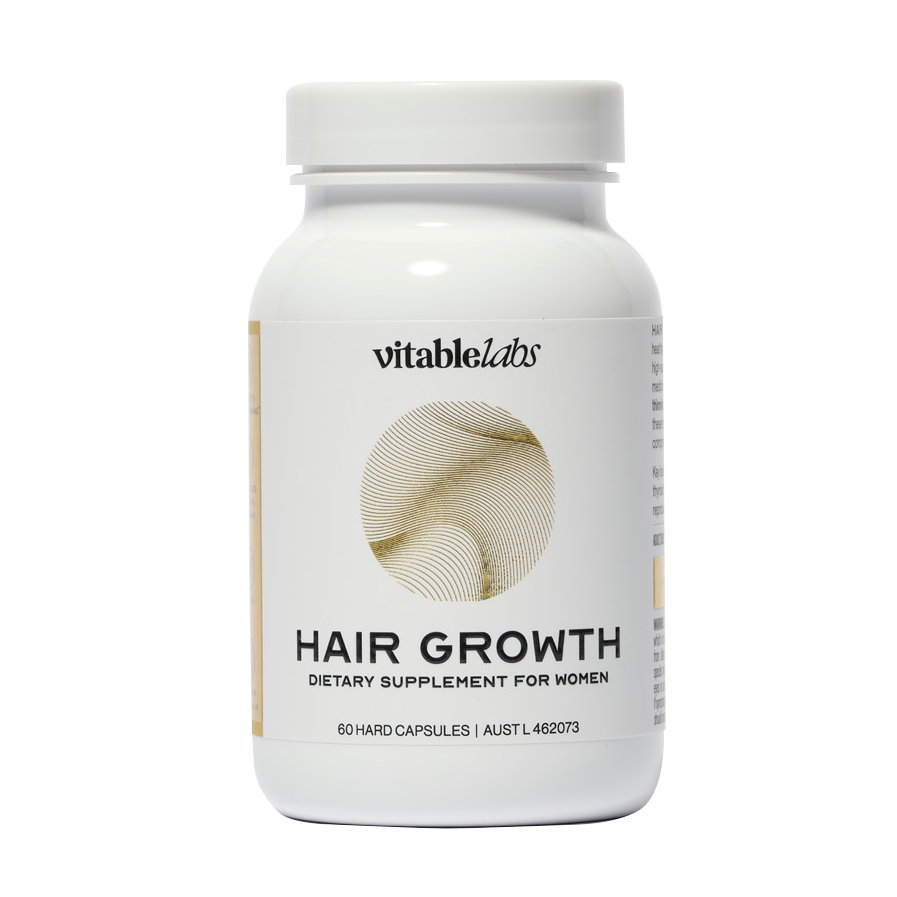It's easy to fall into the mindset that energy levels are simply not the same as they were when you were a young spring chicken, but science tells us otherwise! The good news is you can feel vital, energised, and healthy at any age with the right lifestyle support. Read on to learn more.
One of many indicators of good health is having enough energy to do things you have planned for the day, and having enough left to get you to the next day. This is linked to nutrition as it's where the body gets its energy. Carbohydrates, lipids and proteins that are broken down are transformed into different types of energy used for different functions of the body (1).
Energy levels differ depending on factors such as the environment, physical activity, and age, among other things. For example, changes in seasons linked to high or low temperature can affect the body's metabolism rate, which may use up more energy in the body (2). Likewise, depending on the physical activity you'll be engaging in, it may need more energy than a sedentary activity (3).
Let's zoom in on how energy is affected by age, and what you can do about it to ensure you optimise your workouts.
How life stages impact energy levels
When it comes to energy, several factors account for the different levels required by different age groups. Some factors affected by ageing are body size, body composition and physical activity (3). Gender can also be one of the factors depending on situations like pregnancy and lactation, which can increase the energy needed by the body (4). There are also some cases where males have more energy needs compared to females.
Measuring energy at rest by using resting energy expenditure or REE, it is observed that energy increases from infancy until age 60, from where it starts to decline (4). Energy levels are also relative to a person's body mass. Greater height and weight would mean that more energy is needed to maintain healthy bodily functions (5). It was seen in a study that older people's weight tends to decline with age, lowering the amount of energy they need at rest (6).
Australians measure energy by kilojoules, allowing us to quantify the energy requirements for different age groups (5). According to the National Health and Medical Research Council, the estimated energy requirements for males performing sedentary activity are the following:
- Ages 19-30: 10.8 megajoules
- Ages 31 to 50: 11 megajoules
- Ages 51-70: 9.5 megajoules
- Age 70 and above: 7.9 megajoules (3).
These requirements differ for females, where the amount of physical activity is quantified from 1.2, which is at rest and at 2.4 with strenuous exercise or sport (3).
How to boost your energy through exercise
Exercises can strengthen physical condition, mental health, and overall mood, but it can also improve one's energy levels (7). One study shows that with regular exercise, participants have felt less fatigued and more energised (8).
Low intensity exercises such as yoga and pilates or strenuous routines such as P90X or high-intensity interval training (HIIT) can make a difference. However, different kinds of physical activity are more appropriate for some individuals, given the body's differing energy levels depending on how old a person is.
A daily routine that incorporates a nutritious diet and exercise is one of the best ways to boost energy levels as we age. Irrespective of age, these two factors are beneficial in both improving overall well-being as well as lifting energy levels.
Nutrition to aid energy levels and production
Energy comes from the food that we eat, but there are nutrients that help support energy levels, specifically. It's good to know what those nutrients are so that a person can choose what to do, as energy requirements for different age groups can vary.
The following are some nutrients that you can include as part of your supplementation plan which can be taken alongside a healthy and well-rounded diet:
Iron
There are multiple bodily functions where iron is used. During cellular energy production, iron is involved in processes that create energy for the body to use (10). It can be sourced from meats, seafood, seeds, and nuts (11).
*Iron should only be taken if prescribed by your doctor.
Ashwagandha
Ashwagandha is known in Ayurvedic medicine as a Rasayana, which is a source to invigorate the mind and body (12). It can come in the form of roots and tea to support and maintain energy levels. Ashwagandha has also been touted to improve sleep quality which can help the body restore lost energy during the day (13).
Magnesium
Magnesium is found in ATP production and utilisation, which is important for energy production (14). It also helps provide energy for other bodily functions (15). It's found in green vegetables, nuts, and seeds, as well as supplements (16).
B complex
Vitamin B complex contains eight different B vitamins, which are all present during cellular energy production (17). It helps convert carbohydrates and fats into energy, and acts as a cofactor - helping release energy from food (18).
Acetyl L-carnitine
Found in meats, seafood, and dairy, acetyl L-carnitine is an amino acid that maintains energy levels and production (19). It's found in fat metabolism for energy and transporting fatty acids to the mitochondria or the powerhouse of the cell (20).
Vitamin C
Vitamin C is used for different functions in the body, which includes energy production. It's a cofactor to molecules needed to transport fatty acids to generate energy and carnitine (21). It's present in citrus foods and vegetables and can be found in most foods that people eat (22).
Vitamin B12
Vitamin B12 supports and maintains energy production and levels with its role in fat and carbohydrates metabolism (23). It also supports the breaking down of protein and lipids for energy production (24). Meat, fish, and eggs are some of the foods that contain vitamin B12 (25).
Boost your energy through vitamins
As we age, our energy levels will vary. Vitable can help assist you in receiving sufficient nutrients to support and maintain your energy levels at different stages in life. You can achieve this by pairing our personalised vitamin subscriptions alongside a healthy and well-rounded diet. Get your personalised daily vitamins dropped off at your doorstep through our vitamin delivery services which covers all of Australia.
Find out more about other areas that the above supplements can help you with:
Iron | Ashwagandha | Magnesium | B complex | Acetyl L-carnitine | Vitamin C | Vitamin B12
*Always read the label. Follow the directions for use. If symptoms persist, talk to your health professional. Vitamin and/or mineral supplements should not replace a balanced diet.
References:
- Da Poian, A., El-Bacha, T. and Luz, M. "Nutrient Utilization in Humans: Metabolism Pathways". Nature Education. Published 2010 on https://www.nature.com/scitable/topicpage/nutrient-utilization-in-humans-metabolism-pathways-14234029/. Accessed on Nov. 21, 2021
- Haman, F., Peronnet, F., Kenny, G., Massicotte, D., and Lavoie, C. "Effect of cold exposure on fuel utilization in humans: plasma glucose, muscle glycogen, and lipids", Journal of Applied Physiology. Published Jul. 1, 2002 on https://doi.org/10.1152/japplphysiol.00773.2001. Accessed on Nov. 21, 2021
- ”Dietary Energy”. National Health and Medical Research Council. Published Dec. 16, 2019 on https://www.nrv.gov.au/dietary-energy. Accessed on Nov. 21, 2021
- National Research Council (US) Subcommittee on the Tenth Edition of the Recommended Dietary Allowances. "Energy". Recommended Dietary Allowances: 10th Edition. Published 1989 on https://www.ncbi.nlm.nih.gov/books/NBK234938/. Accessed on Nov. 21, 2021
- “Nutrition Energy”. Australian Government: Department of Health. Published Oct. 8, 2013 on https://www1.health.gov.au/internet/publications/publishing.nsf/Content/canteen-mgr-tr1~nutrition-energy. Accessed on Nov. 21, 2021
- Roberts, S., and Rosenberg, I. "Nutrition and aging: changes in the regulation of energy metabolism with aging". Physiological reviews. Published Apr. 2006 on https://doi.org/10.1152/physrev.00019.2005. Accessed on Nov. 21, 2021
- “Benefits of Exercise”. Medline Plus. Published on https://medlineplus.gov/benefitsofexercise.html. Accessed on Nov. 21, 2021
- University of Georgia. "Regular Exercise Plays A Consistent And Significant Role In Reducing Fatigue". ScienceDaily. Published Nov. 8, 2006 on www.sciencedaily.com/releases/2006/11/061101151005.htm. Accessed on Nov. 21, 2021
- Shimokata, H., and Kuzuya, F. “Nihon Ronen Igakkai zasshi”. Japanese journal of geriatrics. Published Jul. 1993 on https://doi.org/10.3143/geriatrics.30.572. Accessed on Nov. 21, 2021
- Tardy, A. L., Pouteau, E., Marquez, D., Yilmaz, C., and Scholey, A. “Vitamins and Minerals for Energy, Fatigue and Cognition: A Narrative Review of the Biochemical and Clinical Evidence”. Nutrients. Published on Jan. 16, 2020 on https://doi.org/10.3390/nu12010228. Accessed on Nov. 21, 2021
- “Iron”, National Institute of Health: Office of Dietary Supplements. Published on https://ods.od.nih.gov/factsheets/Iron-HealthProfessional/. Accessed on Nov. 21, 2021
- “Ashwagandha Withania Somnifera Uses, Dose, Side Effects, Research”. Easy Ayurveda. Published on https://www.easyayurveda.com/2014/06/22/ashwagandha-withania-somnifera-benefits-dose-side-effects/. Accessed on Nov. 21, 2021
- Begum, V., and Sadique, J. “Effect of Withania somnifera on glycosaminoglycan synthesis in carrageenin-induced air pouch granuloma”. Biochem Medicine Metabolic Biology. Published Dec. 1987 on https://doi.org/10.1016/0885-4505(87)90091-0. Accessed on Nov. 21, 2021
- Tardy, A. L., Pouteau, E., Marquez, D., Yilmaz, C., and Scholey, A. “Vitamins and Minerals for Energy, Fatigue and Cognition: A Narrative Review of the Biochemical and Clinical Evidence”. Nutrients. Published on Jan. 16, 2020 on https://doi.org/10.3390/nu12010228. Accessed on Nov. 21, 2021
- Higdon, J., Drake, V., Delage, B., and Volpe, S. “Magnesium”. Oregon State University: Linus Pauling Institute. Published Feb. 2019 on https://lpi.oregonstate.edu/mic/minerals/magnesium.Accessed on Nov. 21, 2021
- “Magnesium”, National Institute of Health: Office of Dietary Supplements. Published on https://ods.od.nih.gov/factsheets/Magnesium-HealthProfessional/. Accessed on Nov. 21, 2021
- Kennedy D. O., “B Vitamins and the Brain: Mechanisms, Dose and Efficacy--A Review”. Nutrients. Published Jan. 28, 2016 on https://doi.org/10.3390/nu8020068. Accessed on Nov. 21, 2021
- Huskisson, E., Maggini, S., and Ruf, M. “The role of vitamins and minerals in energy metabolism and well-being”. The Journal of International Medical Research. Published May-Jun. 2007 on https://doi.org/10.1177/147323000703500301. Accessed on Nov. 21, 2021
- “Carnitine”, National Institute of Health: Office of Dietary Supplements. Published on https://ods.od.nih.gov/factsheets/carnitine-HealthProfessional/. Accessed on Nov. 21, 2021
- Mendelson, S., “Nutritional Supplements and Metabolic Syndrome”. Metabolic Syndrome and Psychiatric Illness: Interactions, Pathophysiology, Assessment and Treatment. Published May 20, 2008 on https://doi.org/10.1016/B978-012374240-7.50012-7. Accessed on Nov. 21, 2021
- Carr, A., and Maggini, S. “Vitamin C and Immune Function”. Nutrients. Published Nov. 3, 2017 on https://doi.org/10.3390/nu9111211. Accessed on Nov. 21, 2021
- “Vitamin C”, National Institute of Health: Office of Dietary Supplements. Published on https://ods.od.nih.gov/factsheets/VitaminC-HealthProfessional/. Accessed on Nov. 21, 2021
- Huskisson, E., Maggini, S., and Ruf, M. “The role of vitamins and minerals in energy metabolism and well-being”. The Journal of International Medical Research. Published May-Jun. 2007 on https://doi.org/10.1177/147323000703500301. Accessed on Nov. 21, 2021
- Higdon, J., Drake, V., Delage, B., and Miller, J. “Vitamin B12”. Oregon State University: Linus Pauling Institute. Published Jun. 4, 2015 on https://lpi.oregonstate.edu/mic/vitamins/vitamin-B12. Accessed on Nov. 21, 2021
- “Vitamin B12”, National Institute of Health: Office of Dietary Supplements. Published on https://ods.od.nih.gov/factsheets/VitaminB12-HealthProfessional/. Accessed on Nov. 21, 2021







